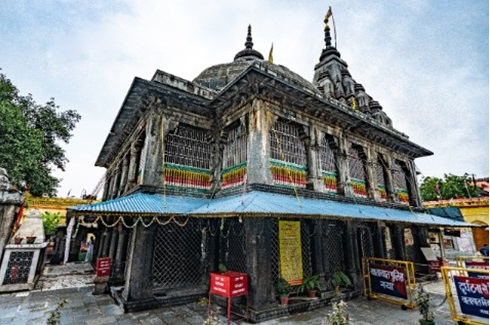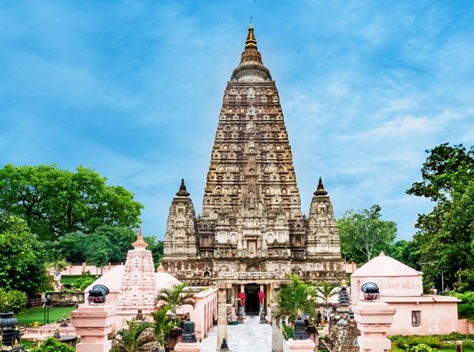| (Preliminary Exam and Main Exam General Studies Paper 1: Indian Culture will include the main aspects of Art Forms, Literature and Architecture from ancient to modern times.) |
Context
In the Union Budget 2024-25, Finance Minister Nirmala Sitharaman has announced a comprehensive development program for the Vishnupad Temple in Gaya, Bihar and the Mahabodhi Temple in Bodh Gaya. This will include comprehensive development programs for the Vishnupad Temple Corridor and the Mahabodhi Temple Corridor on the lines of the Kashi Vishwanath Temple Corridor.
About Vishnupad Temple

- Vishnupad Temple is mentioned in Ramayana (where Lord Rama went to perform Pind Daan for his father Dasharatha) and Mahabharata.
- This temple is located in Gaya, the second largest city of Bihar.
- This Hindu temple dedicated to Lord Vishnu is situated on the banks of the Falgu River.
- Construction: The present temple was built in 1787 AD by Maratha Queen Ahilyabai Holkar of the Malwa Empire.
- Structure:
- This temple is about 100 feet high and has 44 pillars.
- The Vishnupad Temple is built of black granite stones, which have been carved by the craftsmen of Jaipur.
- There is an octagonal silver kund (a tank) installed in the sanctum sanctorum of this temple.
- Religious and Cultural Significance:
- During Pitru Paksha (a period of the Hindu calendar) many devotees visit the temple and participate in various rituals to remember their ancestors.
- The temple complex also has many other small temples, of which the Lord Narasimha Temple and the Lord Phalgeshwara Shiva Temple are of special significance.
- The complex also houses an ancient sundial, which is around 150 years old and is built on top of a pillar-like stone.
About Mahabodhi Temple

- The Mahabodhi Temple (Temple of Great Awakening) complex at Bodh Gaya in the Gaya district of Bihar is a UNESCO World Heritage Site, inscribed on the list in 2002.
Construction:
- The first temple in the Mahabodhi Temple complex was built by Emperor Ashoka in the 3rd century BC.
- The current temple is one of the earliest Buddhist temples built entirely of brick, dating from the late Gupta period (5th-6th century).
- Many sculptures in the temple complex date back to the 8th century and were created during the Pala dynasty.
- Structural Features :
- The total height of the temple is 170 feet and there are chhatras on the top of the temple which symbolize the sovereignty of religion.
- The average height of the main temple wall is 11 meters and it is built in the classical style of Indian temple architecture.
- The average height of the main temple wall is 11 meters and it is built in the classical style of Indian temple architecture.
- The Mahabodhi Temple is surrounded on all sides by stone railings, about two metres high, and has entrances from the east and north.
- The carved stone railings are excellent early examples of stone sculpture.
- The sanctum is 48 square feet and reaches the neck in the form of a cylindrical pyramid.
- The main shrine has a curved shikhara above the amalaka and kalasha.
- The site consists of the main shrine and six other sanctuaries within an enclosed area, with a seventh, the lotus pond, just outside the enclosure to the south.
Connection with Lord Buddha
- The temple is situated to the east of the Mahabodhi Tree (Ficus religiosa), the most important and sacred tree, which has a direct connection with the life of Lord Buddha (566-486 BC).
- Gautam Buddha attained Nirvana under this tree in 531 BC.
- The present tree is a direct descendant (possibly the fifth in sequence) of the original Bodhi tree under which Buddha spent his first week and where he attained enlightenment.
- To the north of the central path, on an elevated area, is the Animeshlochana Chaitya (prayer hall), where Buddha spent the second week.
- Buddha spent the third week in the area called Ratnachakra (circumambulation adorned with jewels), which is located near the northern wall of the main temple.
- The place where he spent the fourth week is the Ratnaghar Chaitya, located to the north-east near the enclosure wall.
- Just after the stairs to the eastern entrance on the central path is a pillar marking the location of the Ajapala Nigrodha tree under which the Buddha meditated during his fifth week and answered disciples' questions.



